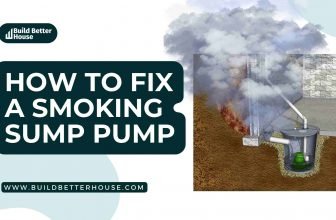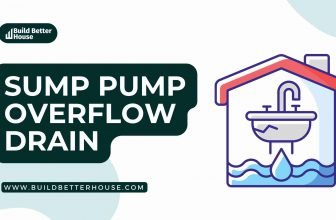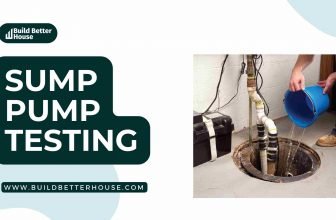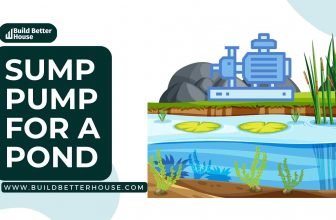How to Prime a Pool Pump: Expert Tips for Efficient Performance
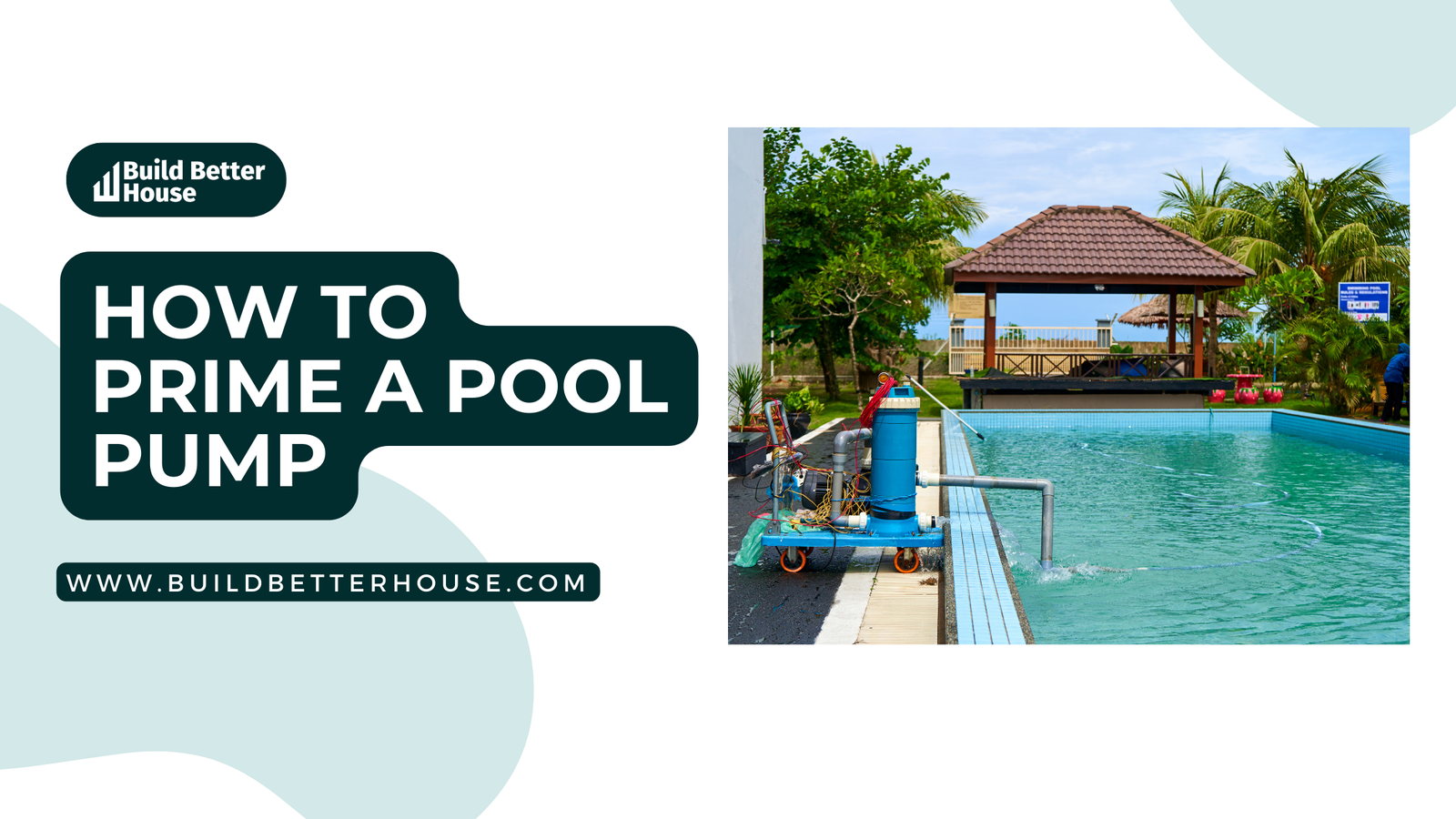
As a pool owner, it’s essential to maintain your pool’s pump to ensure optimal performance and a long-lasting life. One crucial aspect of pool pump maintenance is priming, which involves getting water flowing through the pump before turning it on. Priming ensures that the pump doesn’t run dry and get damaged, as it requires water to cool itself during normal operation.
Understanding the components of your pool pump and recognizing when it needs priming are key aspects to properly maintaining this vital piece of equipment. By learning the process of priming a pool pump, you’ll prevent potential damage and mechanical failure resulting from poor priming. Troubleshooting priming issues and maintaining a primed pump are also essential skills that can save you both time and money in the long run.
Key Takeaways
- Priming a pool pump is necessary to prevent running it dry and causing damage
- Understand the components of your pool pump and when it needs priming
- Learn the proper process of priming and be vigilant in maintaining your pool pump
Understanding Pool Pump and Its Components
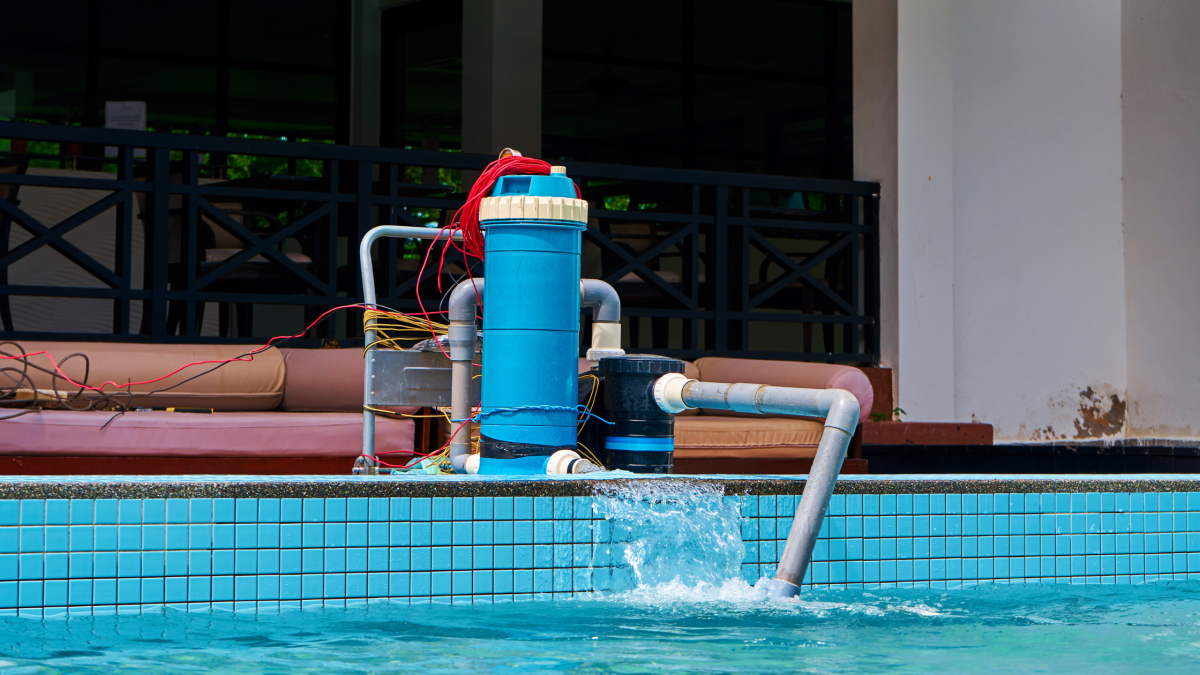
A pool pump is a crucial component of your pool’s filtration system, working tirelessly to circulate and filter water to keep it clean and clear. To maintain a healthy and efficient pool, it is essential to understand the components that make up your pool pump and their functions.
The motor is the heart of the pool pump, providing the power necessary to drive the pump and circulate water through the system. It works hand in hand with the pump basket, which catches debris before it enters the pump, and the pump lid, which seals the basket to prevent air and water leaks.
The skimmer is another vital part of your pool equipment, responsible for collecting debris such as leaves and dirt from the water’s surface. Inside the skimmer, you’ll find the basket, which accumulates the debris for easy removal and cleaning.
Your pool pump is connected to a filter, which plays a significant role in trapping contaminants and keeping the water clean. There are three main types of filters: sand, cartridge, and diatomaceous earth (DE) filters, each offering unique advantages and differences in maintenance requirements.
Another essential component is the multiport valve, which controls the water flow direction within the filtration system. This valve allows for various operations to be performed, such as backwashing, filtering, or recirculating water. It relies on o-rings to maintain proper sealing, ensuring water pressure and avoiding leaks.
Air management also plays a critical part in the efficiency of a pool pump. Air valves and multi-port valves are designed to release excess air that might accumulate, reducing the risk of air pockets disrupting water flow.
Lastly, many pool pumps are equipped with self-priming capabilities, meaning they can automatically purge air from the system and create a water flow through the pump. Self-priming pool pumps are essential for maintaining consistent water filtration and circulation, helping your pool remain clean and safe for use.
By understanding these essential components, you can better maintain your pool equipment and keep your swimming experience enjoyable and hassle-free.
Recognizing the Need for Priming
As a pool owner, it’s important to recognize when your pool pump needs priming and understand what may cause a pump to lose prime. Keep an eye on the following indicators to ensure your pool pump maintains efficiency:
- Water level: A low water level could lead to your pump losing its prime. Make sure that the pool water is at least halfway up the skimmer opening to guarantee proper water flow and avoid running the pump dry.
- Pressure: If the pressure in the system is too low, it might be due to air in the lines or trapped air pockets. In this case, priming the pump is necessary to restore proper water flow and pressure.
- Debris: Pool debris such as leaves and algae can block the suction of the pump or get stuck in the skimmer basket, impeding water flow. Clean your skimmer basket, filters, and return jets regularly to avoid such obstructions.
- Air bubbles: If air bubbles are present in the pool’s return jets, it may indicate there is air in the system, which could cause the pump to lose prime.
- Leaks: Always check for leaks, especially around the pump and plumbing lines. A leak—or even a crack in the suction line—might introduce air into the system, leading to a loss of prime.
- Power: Ensure that the power supply to your swimming pool pump is consistent and stable. A power outage or a tripped circuit breaker could result in the pump losing its prime.
By being mindful of these factors, you can effectively address any issues and maintain the optimal operation of your pool pump. Properly priming the pump and using an air relief valve when necessary can help avoid damage and inefficiencies in your pool system, resulting in a clean and enjoyable swimming pool for you and your family.
The Process of Priming a Pool Pump
Priming a pool pump involves purging the plumbing system of air by manually drawing water from the pool and pushing it through your filtration system, creating a vacuum effect to push water in and force air out. This process ensures the pump’s dependability and prevents it from running dry, which could cause damage to the unit.
First, turn off your pool system and any power connections to ensure safety during the process. Make sure all valves are closed, and if your pump has a multiport valve, set it to the “Recirculate” setting. Locate the pump basket and open the lid, removing any debris that might be inside. Inspect the O-ring for damage and replace if necessary.
Next, fill a garden hose with water and place one end in the pool, attaching the other end to the pump’s inlet, or directly fill the pump basket with water. This step helps add more water to the system to remove any trapped air. If your pump has a priming valve, open it to allow the water to flow freely.
Once the pump basket is full of water, turn on your pool system and observe the flow of water through the pump, which should noticeably pick up as the vacuum effect takes place. Watch for air bubbles to escape from the return jets in your pool as this indicates the air is being forced out.
If your pump is taking a long time to prime, you might need to manually prime it by closing the valves to the skimmer and main drain and using a vacuum to draw water directly through the pump. After priming, open the valves and allow the water to flow normally.
Keep in mind that the impeller inside the pump is responsible for drawing water through the system. Periodically check the impeller for signs of wear or damage as part of your pool maintenance routine.
By following this guide, you can confidently and effectively prime your pool pump, ensuring the efficient operation of your pool system.
Consequences of Poor Priming and How to Avoid Them
Poor priming of your pool pump can lead to various issues within your pool system, including decreased water flow, increased pressure, and even motor damage. It’s essential to ensure that your pump is well-primed to maintain your pool’s cleanliness and efficiency. Here are some consequences of poor priming and ways to avoid them:
Leaky Lid or Cracked Pipes: A leaky pump lid or cracked pipes may cause air to enter the pump system, leading to unsuccessful priming. Check for leaks around the lid and inspect the pipes for any signs of damage or cracks. Replace the faulty parts and ensure the lid is tightly secured to prevent air from entering the system.
Low Water Level: If your pool’s water level is too low, the pump may not adequately draw water, preventing it from priming. Make sure the water level is sufficient to ensure proper flow through the skimmer, and avoid overusing the pump while the pool is empty.
Weak Motor or Faulty O-Rings: A worn-out motor or failing o-rings may cause issues with priming. Inspect the motor and ensure it’s functioning correctly, and consider replacing it if necessary. Check the o-rings around the pump lid and other fittings for wear, and replace them if needed.
Maintain the Filtration System: A thorough pool filtration system ensures that your pool pump doesn’t encounter obstructions while working, making priming easier. Regularly clean your pool filter, clear debris, and ensure adequate water flow through the circulation system.
Check Diverter Valve and Circuit Breaker: Sometimes, a faulty diverter valve or tripped circuit breaker can affect priming. Investigate the valves to ensure they’re functioning correctly and examine the electrical system to prevent power issues.
To avoid future problems and extend your pool season, it’s vital to perform regular pool maintenance, whether it’s for an above-ground or inground pool. By regularly cleaning your pool, inspecting the pump and filtration systems, and ensuring proper water flow, you invest in preventing poor priming and protecting your swimming pool pump.
Moreover, troubleshooting problems early and seeking professional help when necessary can save you time and money in the long run. Don’t hesitate to consult with a pool professional if you’re unsure about how to handle any issues regarding your pool pump or system.
Maintaining a Primed Pool Pump
Maintaining a primed pool pump is essential for keeping your pool water healthy and clean throughout the pool season. Regular pool maintenance is necessary to ensure that your pump continues to work efficiently and effectively. Follow these steps to maintain your primed pool pump:
- Keep an eye on water levels: Your pool water level should always be halfway up the skimmer opening. If it’s too low, add more water to the pool. Keeping an adequate water level helps maintain proper suction and prevents your pump from losing prime.
- Clean the skimmer and pump basket: Routinely check and clean the skimmer basket and the pump strainer basket. Removing dirt and debris prevents clogging in the plumbing lines, which can cause your pump to lose prime or work harder to maintain water flow.
- Check for leaks: Inspect your pool’s plumbing system for leaks, paying close attention to the connections at the pump, filter, and multiport valve. Replace any damaged or worn o-rings to ensure a tight seal and avoid air getting into the system.
- Monitor filter pressure: Keep an eye on your pool filter’s pressure gauge, as it indicates the water flow through the filtering system. When the pressure rises too high, it is time to clean or replace the filter to ensure proper water flow and prevent your pump from losing prime.
- Inspect return jets: Periodically check the return jets in your pool to ensure they’re functioning properly and providing adequate water flow. Adjust the jets if necessary to maintain proper circulation and help keep your pump primed.
- Maintain the pump motor: Regularly inspect your pool pump motor for signs of wear and tear. Lubricate the motor bearings if necessary, and make sure the motor is protected from water and debris. If you hear unusual noises or notice decreased performance, consult a professional.
- Winterize your pump: At the end of the pool season, properly winterize your pump and plumbing system to prevent damage caused by freezing temperatures. This care helps ensure that your pump will be primed and ready to go when the next pool season arrives.
By following these guidelines, you can maintain your primed pool pump, ensuring efficient performance and a clean, healthy pool for you and your family to enjoy.
Troubleshooting a Pool Pump Priming Issue
A pool pump priming issue can be frustrating, but there are several steps you can take to troubleshoot the problem. First, ensure your water level is high enough. For a pump to prime, the water should reach at least halfway up the skimmer opening. Check the pump basket and skimmer basket for debris such as leaves, hair, or dirt. Clean them out as necessary to ensure proper water flow.
Next, inspect the pump lid for cracks or leaks. A damaged or ill-fitting lid can allow air into the system, causing the pump to lose its prime. Make sure the lid is secure and the O-ring is in good condition. If you see any cracks or have a worn-out O-ring, replacing these components will help maintain proper pressure and prevent air from entering the pump.
Examine the pool equipment for leaks, particularly around the pump, motor, and valves. Air might be entering the pool system through cracks or loose connections. Tightening the connections or replacing worn components can eliminate air pockets and prevent loss of priming. Make sure to check all valves, including the multi-port valve, to ensure they are functioning correctly. Valves in the wrong position can lead to priming issues.
Switch your pump to the “recirculate” setting, which bypasses the filtration system. This allows water to flow directly back to the pool without passing through the filter. If your pump primes while in the recirculate mode, this can indicate a problem with the filter or a valve in the filtration system. On the other hand, if the pump still struggles to prime, the issue may lie within the pump or plumbing system.
To release trapped air from the pump, open the air relief valve located on the pool filter. This will allow air pockets to escape and might resolve the priming issue. Remember to close the air relief valve once the pump is primed and water is flowing smoothly.
When examining the motor, listen for any unusual sounds that might indicate malfunction or wear. If the motor appears to be running inefficiently, consult a professional for further inspection.
Keep in mind that some above-ground pool pumps may require manual priming, especially those belonging to the medium-head pump family. To do this, simply fill the pump basket with water until it reaches the top, replace the lid, and activate the pump.
By following these steps and regularly maintaining your pool equipment, you’ll be better equipped to handle priming issues and enjoy your swimming pool without interruptions.
Frequently Asked Questions
How long should priming a pool pump take?
Priming a pool pump typically takes 2 to 30 minutes, depending on the size of your pool and its plumbing system. Keep in mind that the process may take longer for larger pools or if there is a significant amount of air trapped in the lines.
Why isn’t my pool pump pulling water?
If your pool pump isn’t pulling water, it can be due to several issues, such as air leaks in the system or a clogged impeller. First, check the pump basket and impeller for debris. If they are clear, ensure all connections and fittings are tight and undamaged. It may also be necessary to replace the pump lid O-ring or inspect the valves for damage.
Can self-priming pool pumps still require manual priming?
Yes, even self-priming pool pumps may occasionally require manual priming, especially at the beginning of the pool season or if the pool has been sitting unused for a while. Manual priming helps remove any air that might be trapped in the system and ensures proper water flow.
What are the steps to prime a pool pump with a cartridge filter?
- Turn off the pump and ensure the filter valve is set to “filter” mode.
- Open the air relief valve on the filter housing.
- Remove the pump lid and fill the pump basket with water.
- Replace the lid and ensure it is securely fastened.
- Turn the pump on while keeping the air relief valve open until a steady stream of water is visible.
- Close the air relief valve.
How do I prime a Hayward or Pentair pool pump?
The process for priming a Hayward or Pentair pool pump is similar to priming with a cartridge filter:
- Turn off the pump.
- Open the air relief valve, if present.
- Remove the pump lid and fill the pump basket with water.
- Replace the lid and tighten it securely.
- Turn the pump on and wait for the water to flow through the system.
Are Intex pool pumps different when it comes to priming?
Intex pool pumps may have slight differences in their priming process depending on the model. Generally, you will need to ensure the filter is set to the correct mode, fill the pump basket with water, and replace the pump lid securely. Turn the pump on, and the water should begin flowing through the system. Consult your Intex pool pump manual for specific instructions for your particular model.



